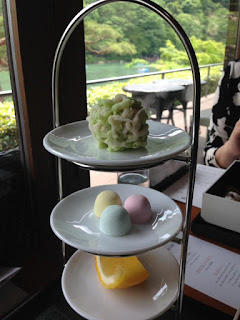I joined a workshop on hand-rolling tea using the leaves of a 90 years-old tea tree.
Many tea at store are produced by cured cultivar tea to equal the quality and character. But tea tree themselves are grown naturally here and there in Japan.
The instructor for the workshop is a tea farmer and a friend of mine.
First, we tasted the tea from 90 years-old tea trees leaves made by the farmer.
Of course, hand-picked and hand-rolled tea. Unlike commercializing tea, looks so natural and so pure. Very delicate and gentle. Subtle sweetness spread in my mouth. There is no distinct flavor, but the tea went into body very smoothly. I felt like “Zen” in it.
He brought some leaves he plucked and leave them for two days. This is called withering. This process helps reduce the water content to accelerate the oxidation.
When you roll them strongly, the tea color will be stronger. When you roll them very soft, the tea will have more flavor and aroma. Depending on pressure on tea, the taste will differ.
After that, spread the tea thinly and equally as much as possible to make them oxidize.
Then stop oxidization with……a hair dryer!!?? Wow!
You need to spread them on a flat place for another couple of days to dry them.
When ready, make a cuppa! Actually, not bad J


























































